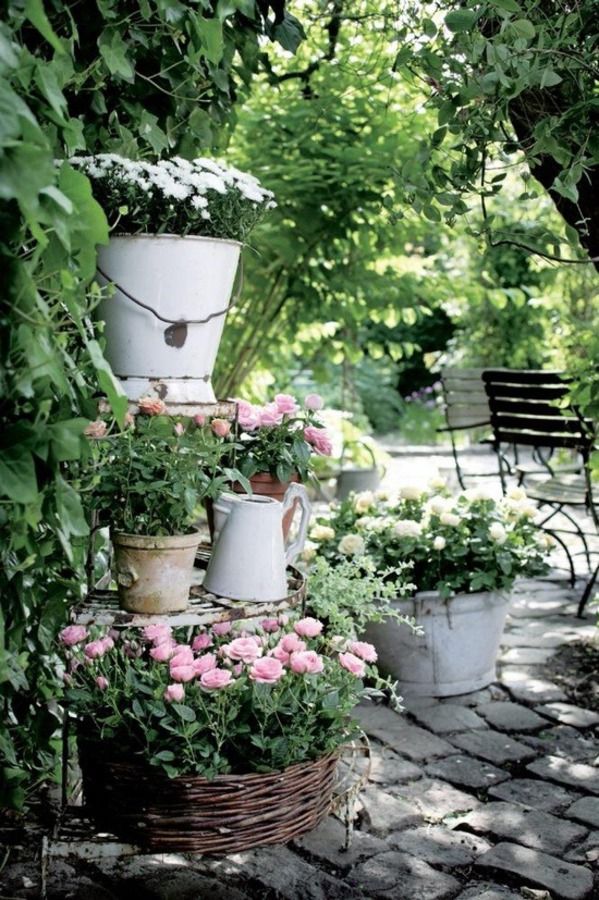Long narrow gardens present a unique set of challenges due to their shape, but with the right ideas and techniques, they can also offer immense potential for stunning outdoor spaces. In this article, we will explore creative ways to make the most out of long and narrow garden areas, providing inspiration for transforming these challenging spaces into beautiful and functional landscapes.
When it comes to designing long narrow gardens, one of the key considerations is maximizing space effectively. Vertical gardening ideas can play a crucial role in utilizing height to create an illusion of depth and adding visual interest to these linear landscapes. By incorporating trellises, hanging planters, or vertical structures, you can make use of the vertical plane to introduce greenery and color without taking up valuable ground space.
In addition to vertical gardening, pathway design is another essential aspect of creating a cohesive and visually appealing long narrow garden. Well-designed pathways not only serve a practical purpose by guiding visitors through the space but also help to break up the linear layout and add interest. By carefully planning the placement of paths and choosing materials that complement the overall aesthetic, you can enhance the flow and aesthetic appeal of your garden.
Vertical Gardening Ideas
Long narrow gardens pose a unique set of challenges, but with the right ideas and strategies, these spaces can be transformed into stunning outdoor retreats. One effective way to make the most of a long narrow garden is to utilize vertical gardening techniques. By maximizing height, you can create visual interest, increase planting space, and add an element of drama to your garden design.
Here are some vertical gardening ideas to consider for your long narrow garden:
- Tiered Planters: Arrange planters in tiered levels to create a cascading effect and make use of the vertical space available.
- Vertical Gardens: Install trellises, wall-mounted planters, or living walls to grow plants vertically and add lush greenery to your garden without taking up valuable ground space.
- Hanging Baskets: Hang baskets from pergolas, arches, or fences to introduce flowering plants or trailing vines at eye level, adding color and texture to your garden design.
These vertical gardening ideas not only help maximize space in long narrow gardens but also create a sense of depth and dimension that can make the garden feel larger and more inviting. By thinking vertically, you can turn a challenging layout into a beautiful and functional outdoor oasis.
Remember that when implementing these ideas, it’s important to choose plants that work well in vertical arrangements and consider factors like weight distribution and maintenance requirements for optimal results.
Pathway Design
Long narrow gardens present a unique set of challenges when it comes to pathway design, as they need to not only be functional but also visually appealing to enhance the space. To make the most out of a linear garden layout, incorporating pathways that lead the eye through the garden is essential. Here are some creative ideas to consider:
- Curved Pathways: Instead of straight lines, consider creating meandering pathways that add interest and a sense of discovery as you navigate through the garden.
- Stepping Stones: Using stepping stones can break up a long pathway and create a more dynamic visual effect. They can also serve as focal points or help divide different zones within the garden.
- Border Plantings: Lining your pathways with carefully chosen plants can define the space and add color and texture to the walkway. Consider low-growing flowers or ornamental grasses for a soft touch along the edges.
Incorporating these pathway design ideas not only enhances the aesthetics of your long narrow garden but also helps guide visitors through the space in an engaging way. By combining various elements such as curves, stepping stones, and border plantings, you can create a visually appealing pathway that complements the overall design of your garden.
Remember that pathway design is not just about functionality; it’s also an opportunity to showcase your creativity and style in your long narrow garden. Whether you opt for a formal look with symmetrical patterns or a more naturalistic approach with winding paths, find ways to incorporate elements that reflect your personality and make navigating through your garden an enjoyable experience for all who visit.
Plant Selection
Long narrow gardens present a unique set of challenges when it comes to selecting the right plants that will thrive in such a space. One key consideration is choosing plants that can tolerate limited sunlight due to neighboring structures or high walls that may block natural light.
Shade-loving plants like hostas, ferns, and certain varieties of coleus are excellent choices for these conditions. Additionally, incorporating vertical plantings such as climbers or tall grasses can add depth and interest to the garden while maximizing the use of the available space.
When selecting plants for a long narrow garden, it is essential to consider the overall aesthetic you wish to achieve. For a cohesive look, think about creating a color scheme or theme that ties all the plantings together.
For example, you could opt for a monochromatic scheme using varying shades of green and white for a serene and sophisticated feel. Alternatively, you might choose a cottage garden style with an abundance of colorful blooms mixed in with herbs and vegetables for a more whimsical atmosphere.
Another important factor to consider when choosing plants for a long narrow garden is their size at maturity. Since space in these kinds of gardens is limited, selecting plants that won’t outgrow their allotted area is crucial.
Compact shrubs like boxwoods or dwarf varieties of conifers are excellent options for adding structure without overwhelming the space. By carefully considering plant selection based on light requirements, aesthetics, and size restrictions, you can create a thriving and visually stunning garden in your long narrow outdoor space.
Focal Points
Water Features
One popular focal point option for long narrow gardens is a water feature. Whether it’s a small fountain, a pond, or a meandering stream, water elements can add movement, sound, and tranquility to the garden. Placing a water feature near the center or end of the garden can create a sense of balance and draw attention to that area.
Sculptures and Artwork
Incorporating sculptures or artwork into your long narrow garden can also serve as eye-catching focal points. Sculptures can provide contrast to the surrounding greenery, while artwork adds personality and charm. Placing these pieces strategically along the length of the garden can create visual interest and encourage exploration as visitors discover each unique feature.
Architectural Elements
Integrating architectural elements such as arbors, pergolas, or trellises can help define different zones within a long narrow garden and provide vertical interest. These structures not only serve as focal points themselves but also offer support for climbing plants, adding texture and color to your design. By incorporating these architectural elements at strategic points along your garden’s length, you can create visual cues that guide visitors through the space while adding depth and dimension to the overall layout.
Designing Zones
Creating Defined Areas
When dealing with a long narrow garden, it is crucial to create distinct zones within the space to maximize its potential and functionality. By dividing the garden into different areas, such as dining or entertaining spaces, lounging areas, and even a small vegetable garden, you can make the most of every inch available. Implementing elements like trellises, hedges, or even different paving materials can help define these zones and create a sense of structure in your garden.
Utilizing Vertical Features
In a long narrow garden, vertical structures can be incredibly valuable in creating separate areas within the space. Consider adding tall planters or raised beds along one side of the garden to create a boundary between zones. These vertical features not only define different areas but also add visual interest and texture to the overall design. Hanging baskets or wall-mounted planters are also excellent options for incorporating greenery without taking up precious floor space.
Maintaining Flow
While dividing your long narrow garden into zones is essential, it is equally important to maintain a sense of flow throughout the space. Avoid creating overly segmented sections that feel disjointed; instead, aim for a cohesive design that seamlessly transitions from one area to another.
Utilize pathways that wind through the garden, leading visitors from one zone to the next while adding movement and interest to the overall layout. By carefully planning how each zone connects and interacts with one another, you can ensure that your long narrow garden feels harmonious and well-designed.
Lighting Considerations
Lighting in a garden is not only essential for practical purposes but also plays a crucial role in creating ambiance and extending usability into the evening. In long narrow gardens, lighting considerations become even more important due to the constrained space and the need to visually expand the area.
One effective way to use lighting in a long narrow garden is through strategic placement of fixtures to highlight key features such as plants, pathways, or focal points. This can help draw attention to specific areas and create a sense of depth within the limited space.
Another idea for lighting in long narrow gardens is to incorporate different types of fixtures such as uplights, downlights, or spotlights to add texture and drama to the landscape. By using a combination of ambient lighting and task lighting, you can create layers of illumination that enhance the overall aesthetic appeal of the garden while also serving functional purposes.
Additionally, integrating solar-powered or low-voltage LED lights can be both energy-efficient and eco-friendly options for illuminating a long narrow garden.
When considering lighting for a long narrow garden, it’s essential to also think about how the fixtures will interact with plantings, structures, and pathways. Pathway lights can guide visitors through the garden seamlessly while adding a touch of elegance to the design.
Up-lighting trees or vertical elements can create stunning silhouettes against the night sky and provide visual interest in an otherwise compact space. By carefully planning and executing your lighting design, you can transform your long narrow garden into a captivating nighttime oasis that is as beautiful after dusk as it is during the day.
| Concept | Details |
|---|---|
| Fixture Placement | Strategically place fixtures to highlight key features in the garden. |
| Types of Lighting | Incorporate different types of fixtures like uplights, downlights, or spotlights for texture. |
| Solar-Powered Options | Consider energy-efficient options like solar-powered or low-voltage LED lights. |
Creative Solutions
Long narrow gardens present unique design challenges but also offer plenty of opportunities for creativity and innovation. When faced with limited horizontal space, thinking vertically can be a game-changer. One clever idea is to use trellises or wall-mounted planters to allow plants to grow upwards, maximizing the available space. This not only creates visual interest but also adds a touch of greenery without taking up valuable square footage on the ground.
Another creative solution for long narrow gardens is to incorporate multi-functional furniture or structures. For example, a bench with built-in storage can serve as both seating and a place to keep gardening tools or supplies out of sight. Additionally, vertical garden walls can double as privacy screens while providing a lush backdrop for your garden. These dual-purpose elements help make the most of every inch in a linear garden layout.
Incorporating mirrors strategically throughout the garden can also create the illusion of space and depth. By reflecting light and greenery, mirrors can visually expand the boundaries of a long narrow garden, making it feel larger and more inviting.
Additionally, using decorative screens or plant partitions can help break up the linear design, adding visual interest and creating distinct zones within the space. Thinking creatively about how to utilize every corner and surface will transform a challenging long narrow garden into a stylish and functional outdoor oasis.
Maintenance Tips
Maintaining a long narrow garden can be just as important as designing it. Regular upkeep ensures that the space continues to look its best throughout the year. One key aspect of maintenance is pruning and trimming plants regularly to prevent overgrowth and maintain the shape and structure of the garden. This not only keeps the garden looking neat and tidy but also promotes healthy growth.
Another crucial maintenance tip for long narrow gardens is to keep an eye on irrigation needs. Proper watering is essential, especially in these types of spaces where water distribution may not be uniform. Installing a drip irrigation system can help ensure that all plants receive adequate water without wastage, helping to keep your garden lush and green. It’s also important to monitor soil moisture levels and adjust watering schedules accordingly, especially during hot summer months.
Lastly, regular inspection for pests and diseases is vital in maintaining a healthy long narrow garden. Keep an eye out for common garden pests like aphids, mealybugs, or spider mites, which can quickly spread if not addressed promptly. Consider using organic pest control methods to minimize harm to beneficial insects while effectively managing unwanted pests.
By staying proactive with maintenance tasks such as pruning, irrigation, and pest control, you can enjoy a beautiful long narrow garden all year round without much hassle. With dedication and care, your garden will continue to thrive and fulfill its potential as a stunning outdoor retreat.
Frequently Asked Questions
How Do You Break Up a Long Narrow Garden?
Breaking up a long narrow garden can be done by creating distinct areas or zones within the space. One way to do this is by using different materials like paving, gravel, or grass to delineate different sections. Adding raised beds, walls, or hedges can also create visual breaks and add interest to the garden.
How Do You Plan a Narrow Garden Bed?
Planning a narrow garden bed involves carefully considering the scale and proportion of plants in relation to the size of the space. It’s important to avoid overcrowding plants to prevent a cluttered look. Creating layers with taller plants at the back and lower plants at the front can help give depth to the garden bed.
How Do You Make an Illusion of a Large Garden?
To make an illusion of a large garden in a small space, strategic design elements are key. Using perspective tricks like converging lines or diagonal paths can create the sense of depth and distance. Incorporating mirrors, vertical elements like trellises or arbors, and varying plant heights can also make the garden feel larger than it actually is.

Welcome to my gardening blog! I am passionate about plants and enjoy sharing my knowledge and experiences with others. In this blog, I will write about everything related to gardening, from tips on how to get started to updates on my own garden projects.





